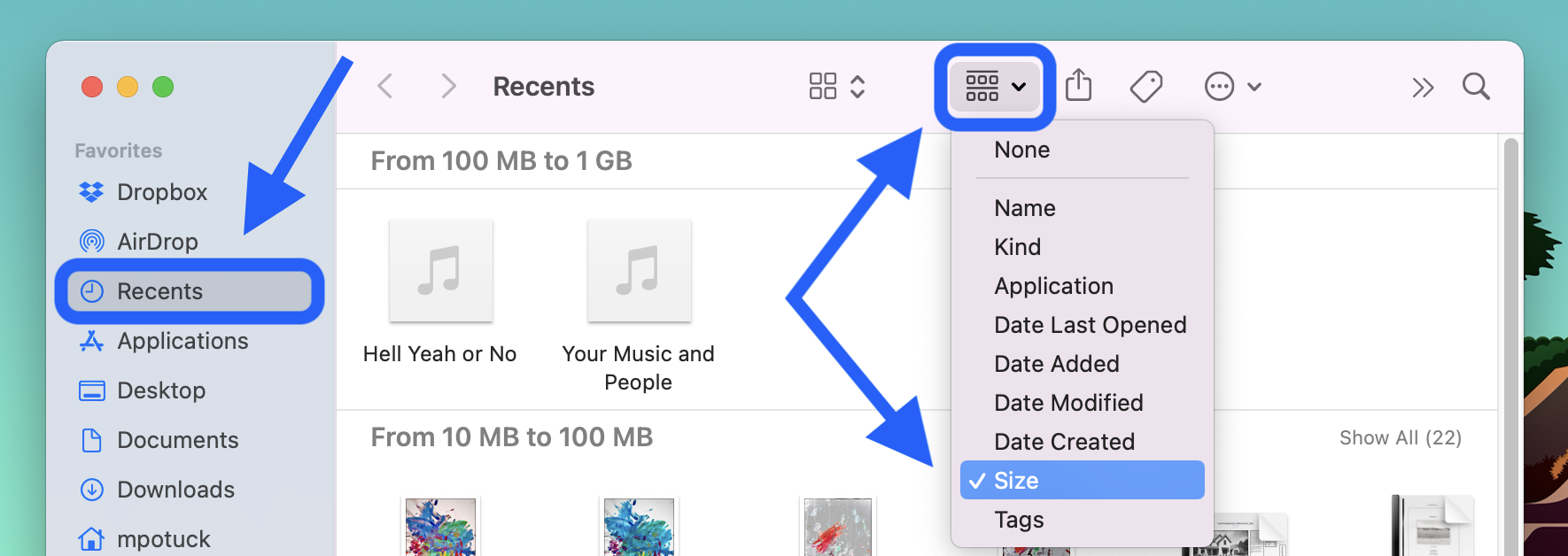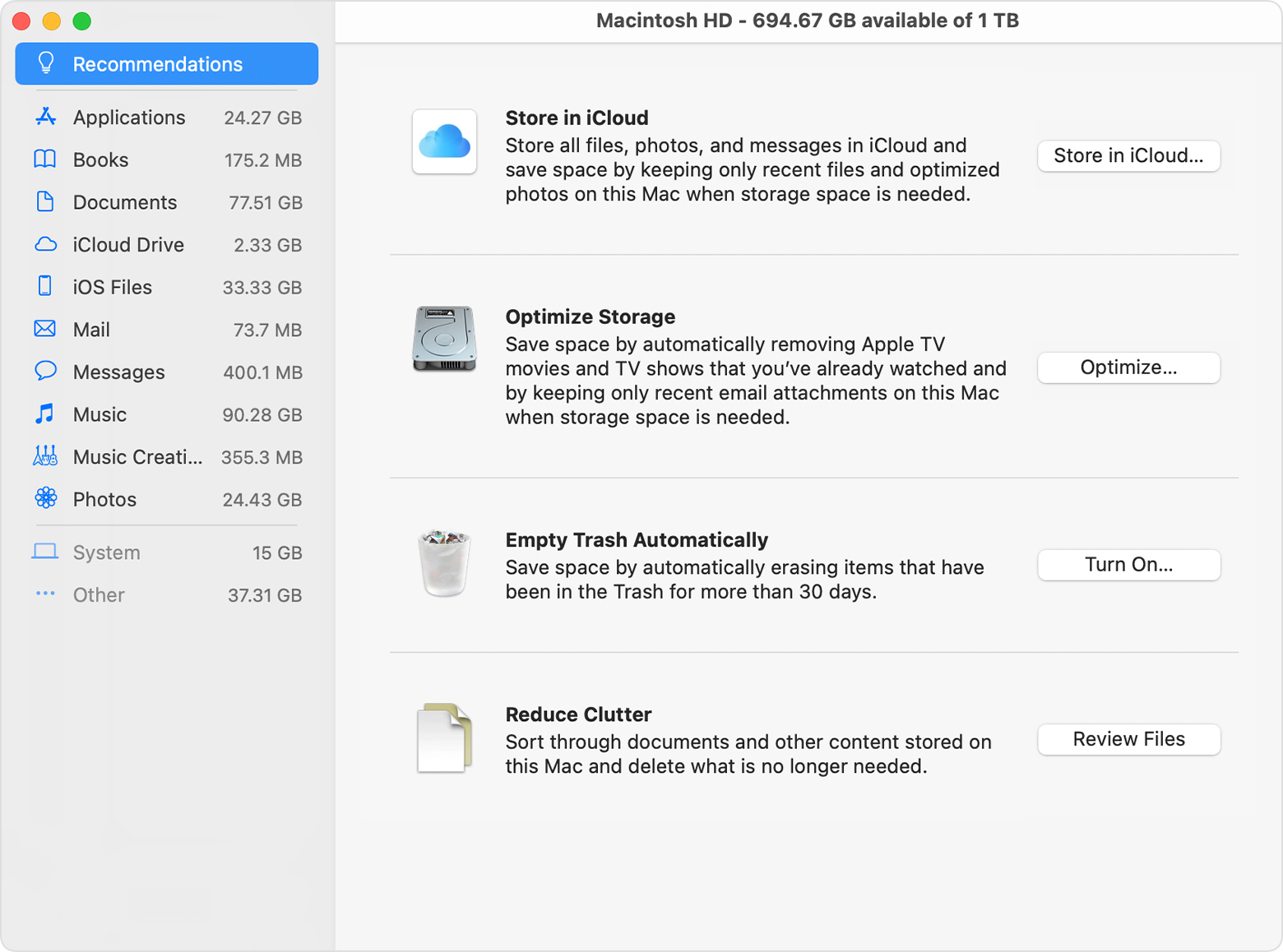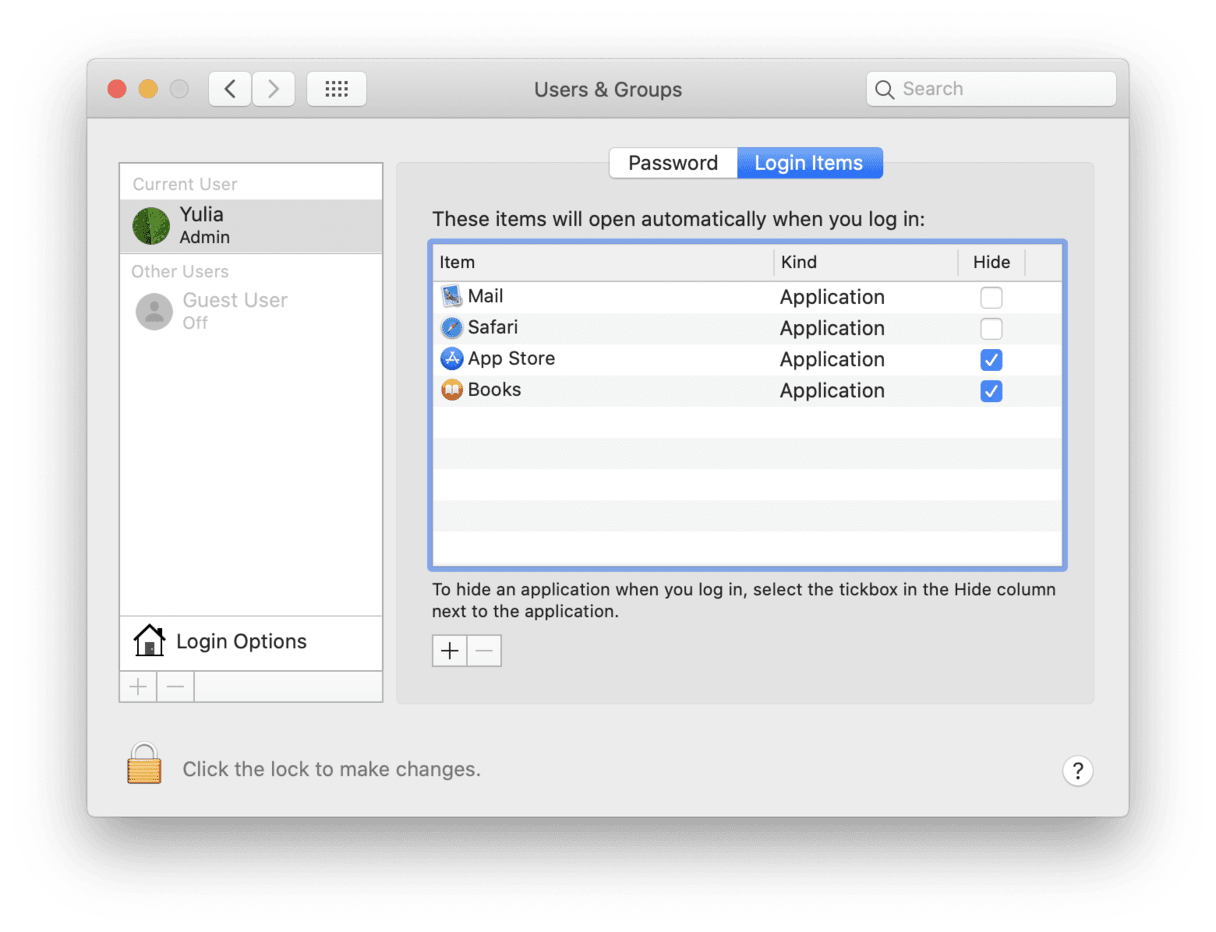Free Up Space On My Mac
You can free up space on your Mac by manually deleting files and emptying your trash. You can also zip files or store them on iCloud to clear space on a Mac. Decluttering apps can help to quickly. No.4 Free Mac cleaner: OmniDiskSweeper - Free hard drive cleaner. OmniDiskSweeper is one free Mac cleaner to find and delete big files that taking up hard drive space and also it can help you recover lost disk space. OmniDiskSweeper helps you sort every file on your Mac by size and you can identify the biggest file to delete it. How to free up space to install macOS. The only way to create enough space on your Mac to upgrade macOS is to get rid of files on your Mac. But how do you choose what to remove and what to keep? Apple’s Manage Storage tool can help. Click on the Apple menu and choose About this Mac. Select the storage tab. Press Manage and follow the.
If you have tried to upgrade to macOS Big Sur, particularly on a Mac with a 128GB SSD, you may have encountered an error message telling you that you don’t have enough free space for the installation. But how much space does macOS take? Let’s find out.
How much space does macOS Big Sur need?
If you’ve downloaded Big Sur, or looked closely at its page on the App Store, you’ll know that the installer/download size is 12.6GB. And you might think that’s all the space you need. But know, that disk image is just the start. It’s not the same as the macOS size on disk. Take a look at the system requirements on Apple’s website, and you will see that you need 35.5GB of free space, and that’s if you’re upgrading from macOS Sierra or later. If you’re trying to upgrade from an earlier version of macOS, you’ll need a whopping 44.5GB of space.
How much space does macOS Catalina need?
If you think that the 35.5GB Big Sur insists on is a huge jump from previous versions of macOS, you’d be right. Catalina, for example, only needs 12.5GB if you’re upgrading from Sierra or later, or 18.5GB if you’re upgrading from an earlier version of macOS. Why is Big Sur so hungry for disk space? Apple doesn’t say. Perhaps it’s for all the new Memoji headgear, hairstyles, and face coverings. Most of the space though is for system files.
What are macOS system files?
Simply, they are all the files macOS installs and that are needed to boot and run your Mac. They include log files, resources, instructions, and everything else the operating system needs.
How to free up space to install macOS
The limitations of Mac storage often create a problem that prevents the Mac from running smoothly, which results in inconvenience to every user. With that said, we take a look at the four ways to free up the storage space on the device manually, according to Apple. How to Free Up Storage Space Manually on Your Mac 1. Jul 21, 2021 The Optimized Storage features of your Mac help you save storage space by storing your content in iCloud and making it available on demand: When storage space is needed, files, photos, movies, email attachments, and other files that you seldom use are stored in iCloud automatically.
The only way to create enough space on your Mac to upgrade macOS is to get rid of files on your Mac. But how do you choose what to remove and what to keep? Apple’s Manage Storage tool can help.
- Click on the Apple menu and choose About this Mac.
- Select the storage tab.
- Press Manage and follow the instructions.
Find large hidden files with an app
Some Mac cleaning apps, apart from their main purpose, are actually a good way to find unused stuff on your Mac. You can use a tool like CleanMyMac X to find your large hidden files, and then delete them manually. Anyway, using such a tool will save you lots of time.

CleanMyMac X has an instrument that identifies large and old files, allowing you to quickly identify the files that will free up most space, or cause the least disruption if you remove them.
You can filter the results by media type and date.
Download the free version of CleanMyMac X here (this tool is notarized by Apple).
Run the app and select Large & Old files from the sidebar.
Also, check the Space Lens tool. This is another way to find the unused space.
How to upgrade your macOS
Once you’ve freed up enough space, you can go ahead and upgrade.
- Click on the App Store icon in the Dock.
- When it launches, search for the version of macOS you want to upgrade to, e.g. Big Sur.
- Press Download and follow the instructions.
macOS upgrades seem to take up more and more space with each version, and this can be a problem if you don’t have enough free space on your boot disk. However, there are lots of options for freeing up space, so you can go ahead and upgrade.
“No matter what I do, my Mac is still slow”, an average tech-consultant hears this phrase multiple times a day. Give a person even the most powerful computer, and pretty soon it will be cluttered with apps, extensions, and things that are too much for it to handle. To reverse it, one has to go back and сlean up the mess, removing memory agents one by one. Prepare for a fight — every byte of memory is at stake. So let’s put your Mac on a diet and get it more free RAM to breathe freely.
First, remove desktop clutter. Get a combination of Setapp apps that clear away unneeded desktop files.
Download Declutter Free“Your system has run out of application memory”
How do you know your Mac is low on memory? Floating “rainbow wheels” aside, you may notice your Mac now takes ages to load. You’ll also see many browser applications crashing. You’ll be also thrown warning messages as “Your system has run out of application memory”. To help it, you should first visit the Activity monitor to see memory usage on Mac.
How to check RAM usage on Mac
Go to Applications and type in Activity Monitor in the search bar. This invokes a good old Activity Monitor that should tell how much free memory you’ve got left.
A shortcut to open Activity Monitor:
Press F4 and start typing Activity Monitor in the search bar.
I’ve attached a screenshot from my Mac and as you can see my memory usage almost reached full capacity. Here’s what it all means:
App memory: taken by apps and processes
Wired memory: reserved by apps, can’t be freed up
Compressed: inactive, can be used by other apps
Swap used: memory used by macOS
Cached files: memory you can really use
Notice the colored graph under Memory Pressure. If your graph is all but red and yellow, your Mac is really gasping for fresh memory. It seems counter-intuitive, but “available memory” your Activity Monitor is not that important after all. In fact, it’s a system intended behavior to use all memory resources when available. On the contrary, the Memory Pressure graph is much more telling, so grow a habit to check this graph in the Activity Monitor every now and then.
How to check CPU usage on Mac
Open the CPU tab in Activity Monitor to keep in check CPU-heavy processes. Normally an app would be using 0-4% of CPU. If it takes abnormally more than that, go inside that particular item in the list and press the Quit button.
How to free up memory on Mac
Tip # 1. Remove Login Items to lower Mac memory usage
Login items are programs that load automatically upon Mac startup. Some of them covertly add themselves to the list and this is no good. If you’re looking to free up RAM, they are the first candidates for deletion. Don’t worry, you’re not deleting the app itself, you just stop it from auto-launching every time.
So, to remove Login Items and at the same time reduce your memory usage of your Mac, you need to:
- Open System Preferences and select Users & Groups.
- Click your nickname on the left.
- Select the Login Items tab.
- Check programs you don’t want to load as your Mac starts.
- Press the “–” sign below.
Now, you won’t see these apps pop up the moment you turn on your Mac. Although this method doesn’t require some superpowers of yours, some special Mac optimization and memory cleaner tools may do the job faster and ensure the smooth performance of your Mac. CleanMyMac X is an excellent example of such software. Here’s how to disable Login Items with CleanMyMac X:
- Download it for free and go to the Optimization tab.
- Check Login Items to see the list of apps that get opened when you start your Mac.
- Click Remove.
As you’ve already come to the Optimization module of CleanMyMac, you can also fix hung apps and heavy memory consumers there. In this way, you’ll free up the solid amount of RAM on Mac — 100% free of charge.
Tip # 2. Free up disk space if Mac is low on memory
The available space on your Mac’s drive translates into virtual memory. This comes to save you when you’ve run out of physical RAM. So now your computer relies on your hard drive space to keep your apps going.
The classic geek rule of thumb holds it that you should keep at least 20% of disk space on your startup drive. Not only this potentially reduces your future spending on iCloud storage but it also keeps your Mac speedier.
What to delete to free up space:
- Large unused files, like movies
- Old downloads
- Rarely used applications
- System junk
But here’s a simpler solution to save your time — clean up your drive with CleanMyMac X— the app I’ve mentioned above. Many users recommend it as an excellent way to free up more space because it searches for large & old files, useless system files, Photo junk, mail attachments and shows everything you can safely delete. Interestingly, it finds about 74 GB of junk on an average computer.
Extra trick: How to free up RAM on Mac with CleanMyMac X
If you have downloaded CleanMyMac, you may also take advantage of its amazing feature — the ability to free up RAM in a few seconds. Try this next time you see “Your system has run out of application memory” message.
- Go to the Maintenance tab on the left.
- Click Free Up RAM.
- Click Run.
As simple as that!
And you can do it even if you download a free version of the app.
Tip # 3. Clean up your Desktop
This tip always comes at the bottom of instructions and unfairly so as it is quite effective. Without even looking at your Desktop I would assume it’s cluttered with mountains of icons. Thing is, your macOS was designed in a way that it treats every Desktop icon as a little active window. The more icons, the heavier memory usage on Mac. So in order to release available memory resources, it’s recommended to keep your Desktop clean.
You don’t have to do it all by yourself. With apps like Declutter and Spotless, every desktop cleaning session will be scheduled in advance and executed automatically. Your only job is to define the rules on how your files should be organized.
Tip #4. Clear cache files
Another way to free up RAM on Mac is to clear it of cache files. Of course, it won’t save you gigabytes of space, but deleting cache regularly, you can help your Mac run faster and avoid system issues.
So, to remove cache files on your Mac, you need to:
- Open Finder.
- From the Go menu, select Go to Folder.
- Type ~/Library/Caches in the field and press Go.
- In the window that appears, you will see all your cache files.
- Press Command+A to select all files or delete files one by one.
- Enter your user name and password to confirm.
If you find some files still in the folder after you emptied it, maybe you have some windows open on your Mac. Just like that, you can save up some space on your Mac. Don’t forget to empty the bin afterward.
Tip # 5. Tune up Chrome’s Task Manager
Although Google Chrome is not the one to blame for massive memory usage, it can indeed affect your Mac's performance. If you use Chrome as your primary browser, you probably have many windows opened there. Chrome runs a lot of processes to ensure a fast browsing experience for you. So, it uses your RAM for storing your tabs, plugins, and extensions. Look at how many entries Google Chrome has in Activity Monitor:
The question then arises, 'Why does Chrome use so much RAM?' The thing is that each process is responsible for a separate plugin or extension of your browser. For example, when a tab unexpectedly falls, you need to refresh it to continue your work there. If one process were responsible for all tabs and extensions, you would need to restart the whole browser instead. Can you imagine how many times would you do that? That’s the proper answer to why Chrome uses so much RAM.
I’ve been using Chrome for some years only to discover (recently) that Chrome had a task manager of its own. You can use it to force quit memory-heavy processes in the browser. It’s a handy tool because it lets you see how a page weighs on CPU usage on a Mac.

- Go to Chrome settings (dotted icon in the top right corner)
- Click More tools -> Task Manager

To free up even more RAM, close the GPU process. The GPU Process, though helpful in theory to accelerate pages, eats up a considerable amount of memory. Click to end it to free up RAM on your Mac.
Tip # 6. Manage RAM usage with CleanMyMac X menu
CleanMyMac X has another useful and convenient feature for managing your Mac’s performance and memory usage. As you install CleanMyMac X and start it for the first time, it’s icon will appear in your menu bar. Click the icon to open the CleanMyMac X menu. Here you can find updates on the current condition of your Mac and perform quick tweaks to increase your Mac's speed. Whenever you feel like your Mac underperforms, open the CleanMyMac X menu to check how much RAM is available and free it up as well.
Tip # 7. Close Finder windows
Okay, suppose you’re still asking yourself, how do I clear RAM on my MacBook Pro/MacBook Air. The next trick is as magical (you’ll see for yourself) as it is time-saving. It’s no secret that each window in the Finder eats up RAM. But how many open windows are there? Some of them are collapsed or stacked in some blind spot on your screen. This Finder command merges all your windows into one. See how to do it:
Click on Finder > Window > Merge All Windows
Now you can manage Finder windows more effectively and free up memory on MacBook.
What else you can do to minimize memory usage on Mac
I’ve saved the easiest tips for the end, as long as these ones are self-explanatory.
- Replace AdBlock (very memory-demanding) with a lighter extension
- Keep fewer opened tabs in the browser
- Restart your Mac more often to free up RAM
- Close all hung-up print queues

That was my take on how to make your Mac a bit speedier to use. If you’re looking for more guidance, check simple ways to speed up your Mac.
Frequently Asked Questions
How to check application memory on Mac?
To check RAM usage on your Mac, go to Activity Monitor (Applications > Utilities). In the Memory tab, you will see all the active processes that are using your Mac’s RAM. At the end of the window, there is a Memory Used graph, which indicates how much application memory is used.
Clear Up Space On Mac
How to find out whether your Mac needs more RAM?
Your Mac may be using almost all its RAM, but you don’t need more if it’s using it efficiently. Open Activity Monitor and go to the Memory tab. The Memory Pressure graph shows the current condition of your RAM: green color means your Mac’s using RAM effectively, while yellow is a sign that some application or process is using too much of application memory. The red memory pressure signals that your Mac needs more RAM.

How to quickly free up RAM on your MacBook?
Free Space On Mac
To free up RAM on your Mac, firstly, you should find out what app uses so much of your memory. The memory-heavy programs are listed in Activity Monitor, Memory tab. If there is an app you aren’t using at the moment, click it and press the “X” sign to quit it. This will, in turn, free some of the application memory.